






Executive Summary 3
Introduction 5 Spartanburg Context 7 Task Force Overview 11
Emerging Investment Areas 15 The Path Forward 33
Appendix A: Supporting Data Tables 34
Appendix B: Task Force Members 36

Appendix C: Data Framework 37
Sources 38
About HEI 39

The Spartanburg Academic Movement (SAM) is a partnership of education, business, government, foundation, community, and faith leaders across Spartanburg County (SC) working together in pursuit of high levels of academic success for all children and adults.

Recent investments in SAM and the county’s education efforts have yielded an opportunity to leverage existing work and build a pathway toward a more equitable future, where all Spartanburg residents can access college and meaningful careers by 2030. Building on significant progress in the K-12 arena, SAM decided to bring additional focus to high-impact postsecondary strategies that will drive the county toward increased postsecondary education attainment.
In Spring 2022, the Spartanburg Academic Movement (SAM) convened the Postsecondary Education Attainment Task Force, comprised of over two dozen education leaders in Spartanburg County. This group was tasked with creating an action plan that builds on the timely and urgent work of OneSpartanburg’s Vision Plan 2.0, bringing together Spartanburg stakeholders to implement scalable solutions that will strengthen education and workforce pathways, including increased postsecondary attainment.

by ensuring tuition discounts and full cost-of-assistance programs exist to support equitable attainment, and growing public awareness about the availability of financial and other supports.

by supporting dual enrollment programs, growing asynchronous information and expert mentors/counselors to help students and families navigate the education pipeline, and improving data transparency and curriculum to support college and career readiness.
by supporting adults with some college and no degree, and those who have graduated from high school but are not enrolled in postsecondary education. Investments to support adults will straddle educational institutions and employers, and focus on the unique pressures faced by adults enrolled in postsecondary education.
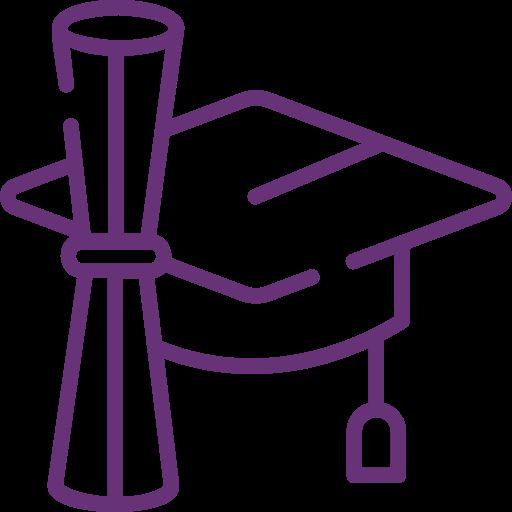
by creating strong feedback loops between educators and employers to guide workforce alignment. Increase internship and apprenticeship activities as well as career counseling.


by focusing especially on mental health supports, growing capacity at colleges and universities in high-demand careers, and continuously refining a postsecondary education policy agenda.

This action plan offers 5 major investment areas with implementation guidance and consideration of the resources necessary to achieve each desired outcome:
5. Identify and Address Emerging Community Needs that Might Hinder College Persistence and Completion
Spartanburg County has spent the last two decades calling for a more educated citizenry that will build a stronger workforce, raise the standard of living, strengthen the tax base, and grow international competitiveness.
K-12 education investments have ensured that the postsecondary education enrollment rate within one year from high school consistently hovers around 60%, while postsecondary graduation rates follow nationwide trends with about 37% of students obtaining a postsecondary degree within 6 years. The bachelor’s degree (or higher) education attainment rate has grown slowly over time to 25%, but Spartanburg County is falling short of the 2030 goal that it set in 2008, which would double degree attainment to 40% by 2030—called the 40/30 Challenge.

Whereas the 40/30 Challenge was an aggressive community response to a growing worry when it was launched through the Spartanburg County Compact in 2008, workforce projections have outstripped its goals. Georgetown’s Center on Education and the Workforce’s “2020 Recovery” report predicts that employers will require 65% of all jobs to require at least some college. Though the pandemic has sped up the concept of “skills-based hiring,” where employees are matched with jobs based on their skills versus their degrees, most employers are still expecting that candidates will have learned those skills in traditional education settings, including community colleges and four-year institutions. Investments in these education institutions will be necessary to ensure people access the resources they need to become connected to the jobs that are in demand and pay a family-sustaining wage.
Spartanburg County also focuses on education because the evidence has clearly demonstrated that investments in all people within a community result in a citizenry who “earn more, pay more taxes, and are more likely than others to be employed.”¹ There is also a direct relationship between possessing a college degree and practicing a healthy lifestyle. Populations with higher education attainment rates have a more active citizenry and greater engagement in children’s activities. Moreover, average lifetime earnings increase significantly with education attainment: over the course of their lifetime, an individual with a bachelor’s degree can expect to earn more than an additional $1.2 Million compared to someone with only a high school diploma. See Figure 1 in Appendix A.


The Bill & Melinda Gates Foundation, as part of its Postsecondary Value Commission, has issued a robust definition of educational value that reflects how efforts to improve outcomes are multi-dimensional and nuanced: “Students experience postsecondary value when provided equitable access and support to complete quality, affordable credentials that offer economic mobility and prepare them to advance racial and economic justice in our society.”² Spartanburg County has a unique set of leaders and citizens who are up to the task of developing a nuanced set of strategies to serve their education and workforce goals.
In this context, the Postsecondary Education Attainment Task Force in Spartanburg County guided its work with four framing elements to create a responsive action agenda tailored to the needs of the county:

1. Focus on the adult dimensions of college attainment in addition to the direct high school-to-college pathway. Limiting investments to target traditional-age college students will exclude over 50% of Spartanburg County’s citizens, who are people who have a high school degree or some college but no associate or bachelor’s degree.
2. Build workforce alignment strategies that consider in-demand, high-wage jobs and the credentials and degrees that lead to them. In this rapidly changing workplace, in-demand credentials and required skills are shifting. Real data is needed to guide decision-making.
3. Improve student retention, persistence, and success in postsecondary education settings. Work to plug all leaks in this pipeline and to support the “low-hanging fruit”— students who already decided they wanted to attend college but encountered barriers to persistence and completion that perhaps could be readily addressed with smart policies and programs.
4. Maintain an equity lens that ensures groups of Spartanburg citizens are not left behind in elements #1 through #3, addressing equity gaps related to economic disadvantage, race/ethnicity, gender, and disability status.
Whereas economic competitiveness is increasingly a regional strategy, state and federal dollars are also key drivers. The most dynamic communities are those that work together to build strong networks that can support education systems, employers and companies, and all the components that interconnect throughout the education-to-workforce pipeline at the local through national levels. Spartanburg County has received national recognition for its efforts to increase the number of people in the region with a college degree; its strong efforts in this realm, coordinated by SAM and with the active engagement of education, community, and business partners, are paving the way for significant growth in college degree attainment.
The pathway to postsecondary education consists of a positive progression for individuals beginning in infancy and early childhood. Ongoing access to high-quality K-12 opportunities is a critical foundation to high-value college and career opportunities. Spartanburg is working at all levels of the education pipeline to expand better outcomes, especially for those underrepresented in education and economic opportunity.
86%
The high school graduation rate in Spartanburg County public high schools was 86.2% for the class of 2022, a decrease from the previous year, with Black and Hispanic students slightly below White students, and students from poverty-affected backgrounds substantially lower than those from more affluent backgrounds.⁵
59%
College enrollment after high school in Spartanburg within one year after graduation has been declining over the decade and was at 59% for the class of 2021 (with significantly lower levels for those from minority and economically disadvantaged backgrounds).⁶ A little more than two thirds of high school students who enroll in college within one year attend public institutions, and forty percent of high school graduates who enroll in college within one year choose a two-year college.
79%
College persistence from first to second year among those graduating from Spartanburg high schools was at 79% for those graduating from the class of 2019 (with lower rates of return for those from minority and economically disadvantaged backgrounds).⁷

37%
College completion for high school graduates was at 37% for the class of 2015, again with variations in outcomes for some populations.⁸
36%
Education attainment among adults in Spartanburg for those ages 25-64 is below the national average with approximately 36% of this population holding an associate's degree or higher. Spartanburg’s remaining adult population has less than high school or only a high school diploma (42%), or some college experience but no degree (22%).
Factors that have a significant impact on this postsecondary strategy include the following:
There are 5 undergraduate-serving educational institutions in Spartanburg County, which together enroll over 13,000 students annually.⁹ Two additional institutions, VCOM and Sherman College, serve post-baccalaureate students only and focus on health care. These 7 institutions provide significant leadership to the higher education sector in the county and enroll the majority of Spartanburg residents; however, this Task Force also recognizes that many residents choose to attend college or university outside county limits.
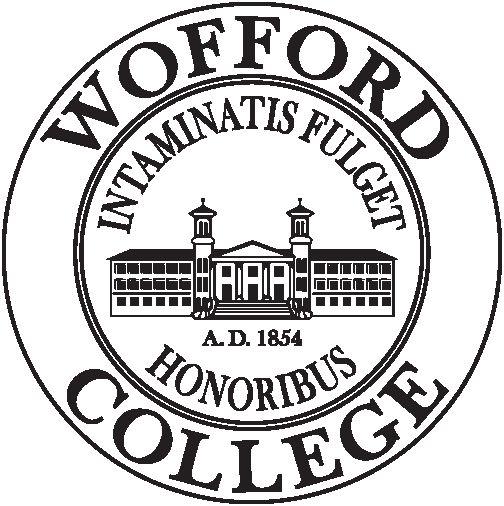




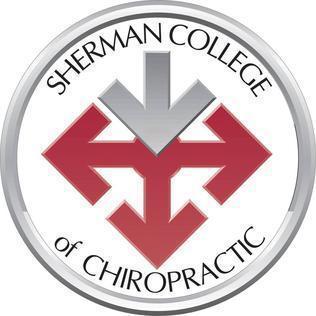



As South Carolina, along with the rest of the U.S., shifts toward a more knowledgeand skills-based economy, more Spartanburg citizens need postsecondary credentials to fully participate in the ever-changing labor market.
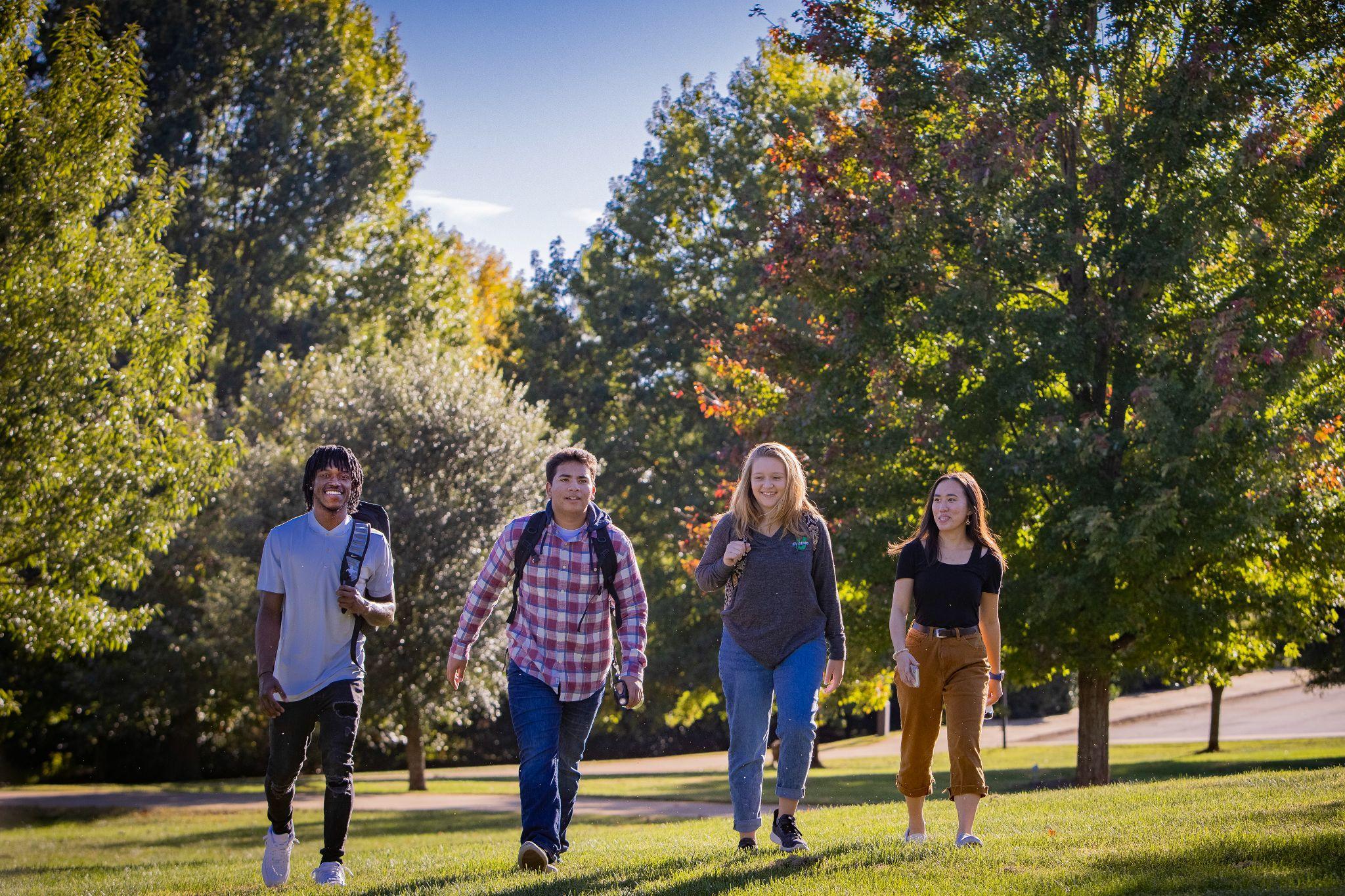
Jobs that once provided a living wage for families are increasingly out of reach for those with a high school diploma or less. Individuals must have some kind of credential beyond high school to get on the path to career opportunity. However, not all economic opportunity requires a baccalaureate degree. For this reason, Spartanburg is conducting an extensive market analysis to understand local employment opportunities and where opportunities lie for its residents who seek high-value, shorter-term credentials. Simultaneously, Spartanburg continues the pursuit of equitable educational opportunities for all individuals as the market share of jobs has continued to go to those with bachelor’s degrees.¹⁰ Spartanburg must continue to focus on advancing economic opportunities for those who have been marginalized by building a portfolio of offerings that includes in-demand shorter credentials as well as bachelor’s degree programs.
The Lumina Foundation’s Stronger Nation work is based on the premise that as we move from an industrial economy to a knowledge economy, the majority of jobs will require some post-high school education. The Lumina Foundation’s national, state, and regional data are focused on assessing education attainment rates for adults ages 25-64, and its data include associate degrees and bachelor’s degrees.¹¹ According to its analysis, postsecondary education attainment in Spartanburg has been on a positive trajectory from 2009 to 2019 for adults aged 25-64, yielding a 17.8 percent increase in the number of individuals with postsecondary education of any kind (see Appendix A, Figure 2). The county is improving more rapidly than the state of South Carolina, which has improved its overall educational attainment level 5.8 percentage points, a 16.7 percent increase.¹² In both cases, it is worth noting that much of this growth has come from immigration rather than the county and statewide policies intended to grow education attainment.
SAM’s Postsecondary Education Attainment Task Force was launched in April 2022 to steer the development of a Spartanburg community action plan that builds on OneSpartanburg’s Vision Plan 2.0, energizing and engaging diverse stakeholders and organizations. Task Force members, representing the 7 colleges and universities in Spartanburg County (all of which currently participate in the “College Town” initiative) as well as K-12 school districts, adult education providers, and the business community, maintained a monthly working meeting schedule through the spring, summer, and fall (see Appendix B for Full Task Force list).
focused on engaging the community and listening to hopes, concerns, and ideas around postsecondary education attainment, leading to the postsecondary education retreat that the Task Force hosted in June 2022.
focused on identifying the key outcomes used to measure impact of this work and specifically guide which data sources SAM will use to report progress, and eventual success, toward the Task Force’s goals.
focused on identifying those practices and programs that are currently implemented effectively in Spartanburg that could be resourced or grown to help the community more effectively reach its postsecondary education attainment goals, with a particular look at ensuring equitable attainment.
focused on identifying new solutions— either successfully implemented in other communities or those that the group designs—to help Spartanburg more effectively reach its postsecondary education attainment goals, with a particular focus on equitable attainment.
Over time, the Scaling Promising Practice and Piloting Solutions working groups combined due to their similar and at times overlapping charges.

From its first working session, the Community Engagement Working Group was deeply committed to listening to unheard voices from the Spartanburg community around ideas, feelings, and perspectives related to higher education.
“
As residents of Spartanburg County, we believe that we are a community of individuals whose success is interdependent. We are using an equity lens to drive our work, connecting with the people and organizations already dedicated to this work, and identifying those gaps and problem areas that are hampering our goal of doubling bachelor’s degree attainment by 2030. Our work starts by listening to our community members, reaching people where they are, and ensuring diverse voices and perspectives are embedded in our work from the beginning.

–Framing language from the Community Engagement Working Group

Task Force members were encouraged to think about engaging residents at their natural gathering places–at churches, civic associations, youth enrichment programs, community centers, and employer groups– to host listening sessions with those who had completed college and those who had not.
Task Force members asked questions such as the following:
● What barriers exist in Spartanburg that hinder college completion?
● How might we provide additional resources to support college completion?
● Why did you (or would you) seek a bachelor’s or other degree?
● What factors stopped you (or others you know) from completing a bachelor’s degree?
These listening sessions were hosted throughout the summer, and the themes that emerged from them guided the investment areas presented in this report.
In June 2022, the Task Force hosted a full-day retreat, which engaged nearly 80 community and education leaders at VCOM’s campus to build a shared vision for the future of Spartanburg.
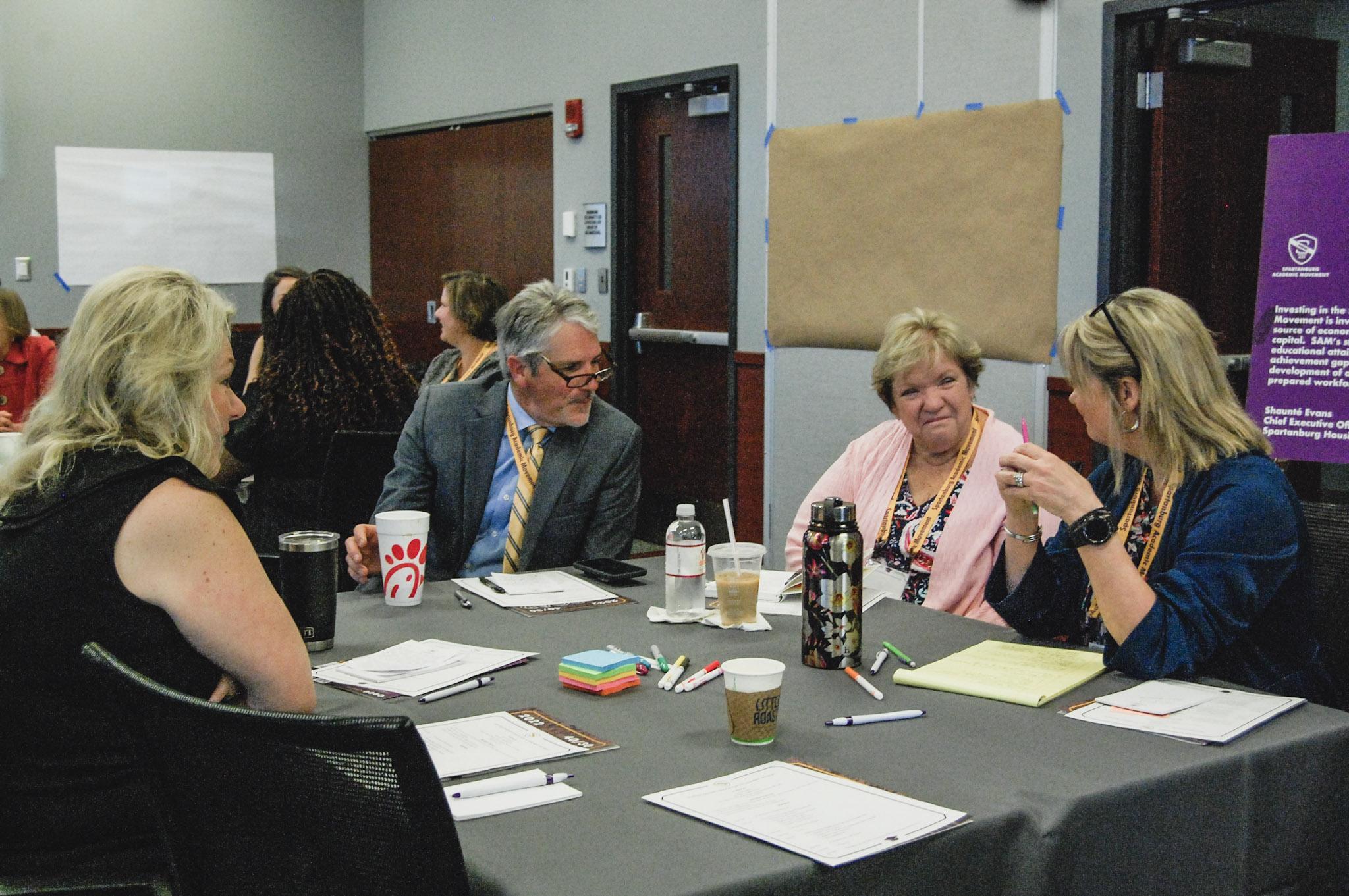
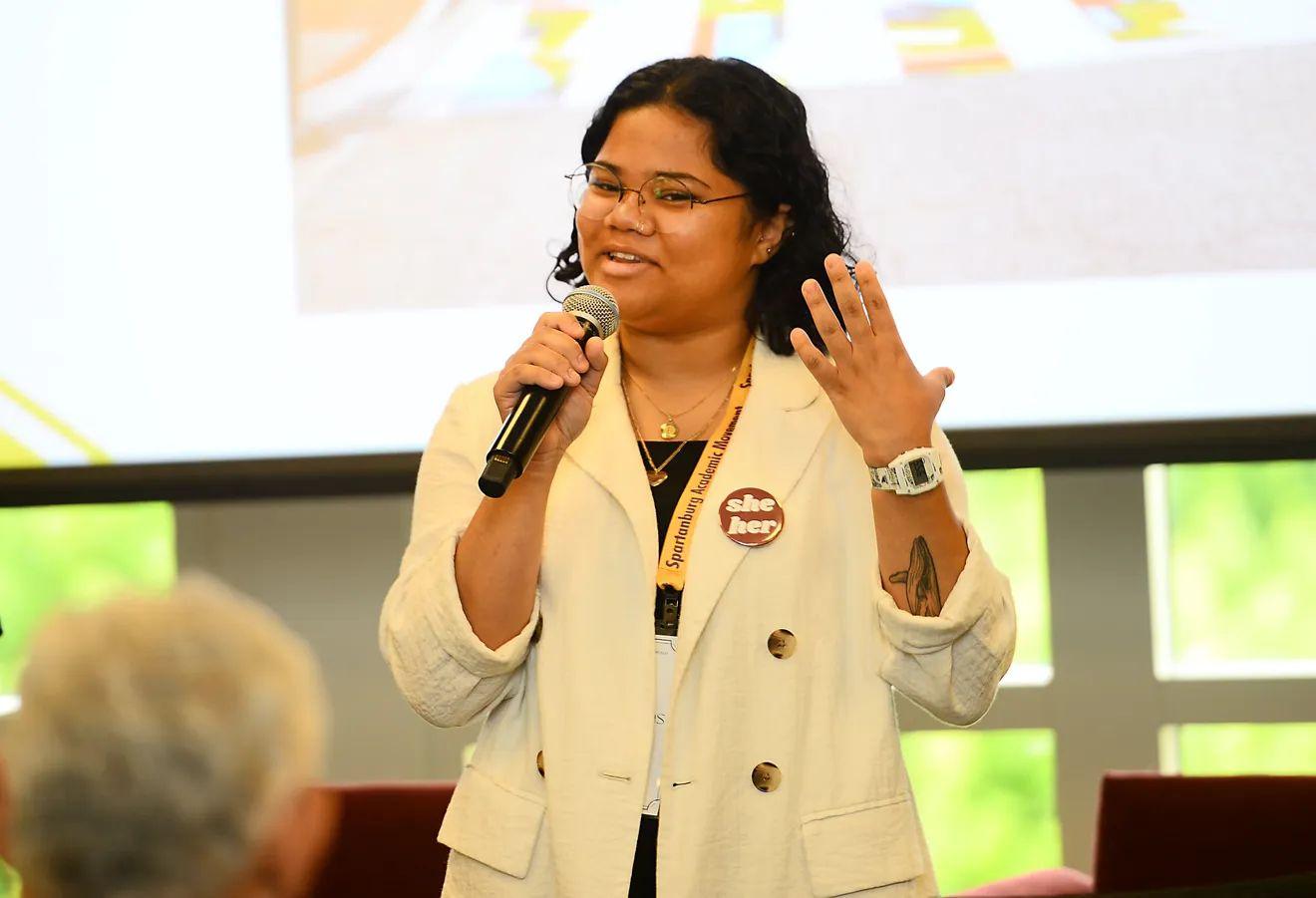
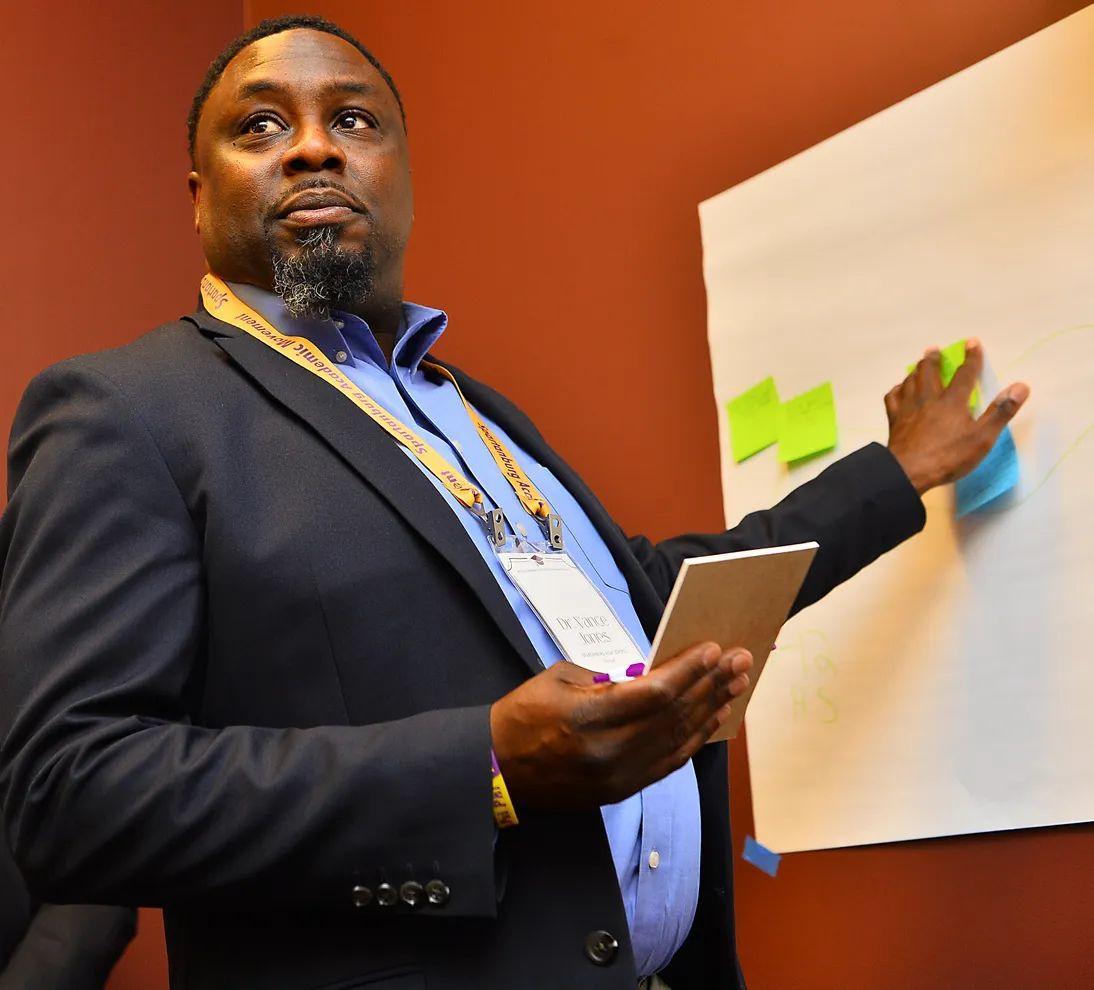
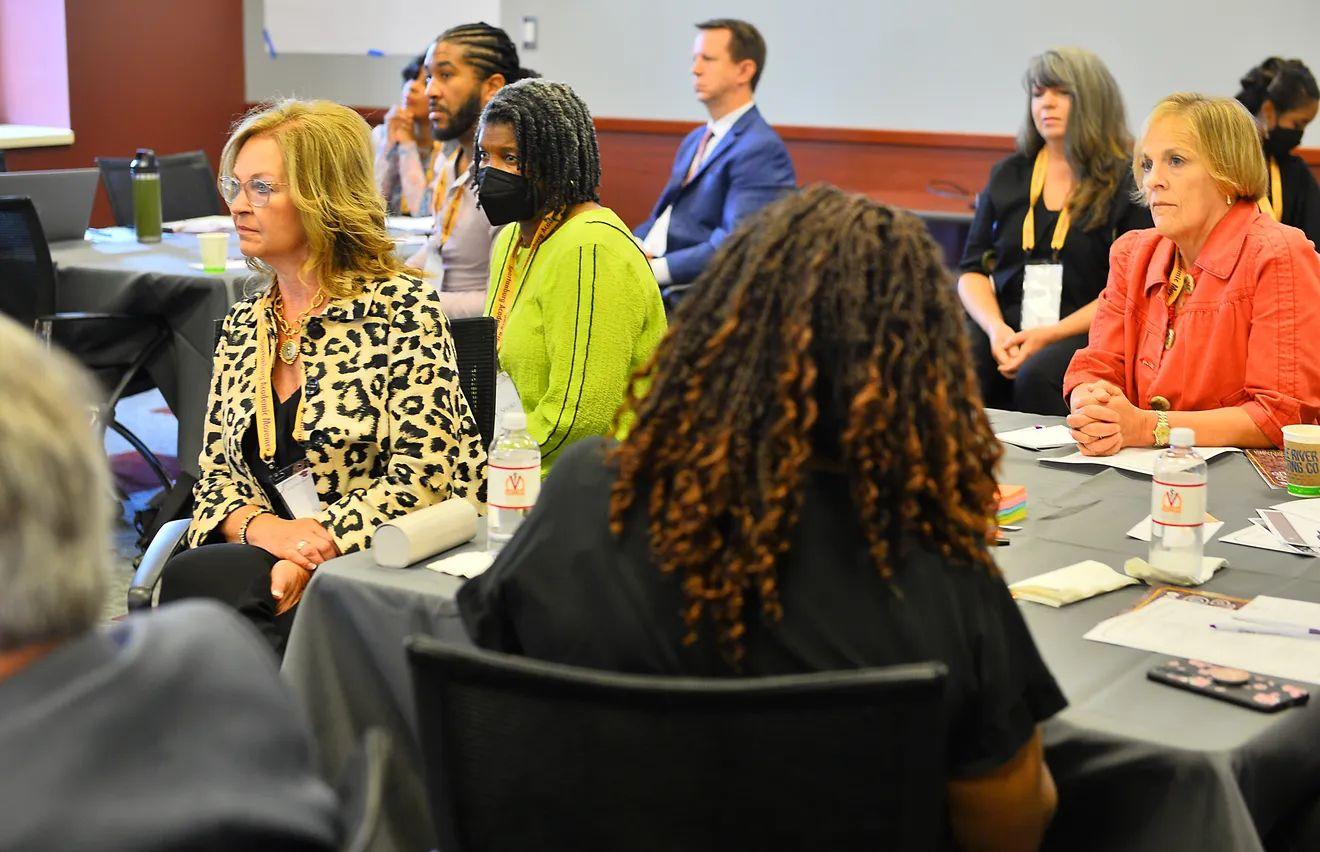
During the retreat, community members participated in a series of exercises designed to explore why they engage in this work, clarify how they define success around college attainment, and brainstorm types of activities they might execute through a joint community action plan that will improve student outcomes. Community members also heard from half a dozen students who shared their inspirational and varying stories, reminding everyone of this work's importance and its complexity.

During the retreat, community members identified several themes that are critical frames to strengthening college attainment rates in Spartanburg:
● Families and students are looking for work & learn connections. Throughout the day, students, employers, and educators underscored the need to link college attendance and completion to meaningful professional opportunities and wealth creation. Work connections such as internships, training, and job shadowing all ensure that the connections between education and work are more permeable and can help students maintain their focus on college attainment.
● Specialized populations require specialized support. Certain populations, including first-generation college students, rural students, students of color, and working adults, need tailored efforts to ensure equitable participation in college completion efforts. Such support may include mentoring efforts, FAFSA-completion programs, and wraparound services that target unique needs. Leaders in Spartanburg will need to listen to these unique populations and learn their key barriers before crafting responsive solutions.
● Spartanburg needs to focus on discounting college costs. These efforts may include tuition reimbursement programs from employers, expanding free tuition efforts in the community and state, and dual enrollment programs that allow students to earn college credits while also completing their high school degrees. The Task Force heard an apparently wide belief that college is simply not affordable.

● Family engagement is vital. For many students, family support (from parents, spouses, and children) can be the deciding factor as to whether a person enrolls in college. Interventions must be multi-generational and engage all members of a student's support system.
● There must be opportunity for all in Spartanburg, including adults. Participants were passionate about identifying alternate pathways, ensuring flexibility and transportation, and considering childcare and other elements that are necessary for working adults attending postsecondary education. Spartanburg residents must be able to see how college can be made affordable, logistically possible, and attainable for all.
● Growth for Spartanburg means staying in Spartanburg. Spartanburg has traditionally imported much of its talent, and as participants imagined raising college attainment, a key theme in the room was that residents needed to see themselves staying in Spartanburg after graduation. This notion of "home-grown" talent resonated with themes that emerged throughout the day around community, family, and connection.
The Emerging Investment areas outlined below were framed by the community through the Task Force’s listening sessions, its postsecondary education retreat, and through the many conversations that Task Force members had with stakeholders throughout the duration of this work.
The five Emerging Investment Areas in this postsecondary education action plan build on several of the talent initiatives outlined in Spartanburg’s Vision Plan 2.0. Because this action plan is focused specifically on postsecondary education, it does not address two elements of Vision Plan 2.0: the “childcare and early education” initiative (which SAM has long been investing in) nor the “talent marketing and attraction” initiative, which is more directly driven by OneSpartanburg, Inc.
Spartanburg has a long history of working collaboratively for change across the region, and its leaders expect to work together to ensure forward momentum and sustainable growth. The action agenda outlined below includes both “higher impact” and “lower impact” activities for each major area. Additionally, this action agenda will discuss how investment areas can interact and leverage each other, thus magnifying the overall impact of community investments.
Task Force members agreed that investments need to be scaffolded into a plan that ensures all Spartanburg County residents can access and complete college, participate in a dynamic workforce, and contribute to Spartanburg’s vibrant community.


Despite the efforts of many committed education and civic leaders in Spartanburg County and South Carolina, and data that indicate demand for increased educational attainment, the perception persists that “not everyone needs to go to college.”

Consistently low unemployment rates in Spartanburg County often mask the inequities aligned primarily along race/ethnicity and socioeconomic groups, inequities that can negatively affect healthy lifestyles, civic engagement, and ability to earn a living wage. To this end, the Task Force has prioritized investments to improve Spartanburg’s college-going culture and imagines focusing in these two areas:
Public Awareness, to ensure that community members are aware of the value of attending postsecondary education and also the resources available to all students. This category of investment includes programmatic activities such as SAM’s FAFSA-completion efforts and partnerships with churches, community centers, and other community organizations to provide supports to underserved students. This investment area also includes growing mentoring programs for students at various transition points, such as SAM’s Start Smart program, which offers both peer mentoring and expert coaching.
Tuition Discounts and Full Cost-of-Attendance Assistance, to ensure resources exist to help students of all ages attend college. Residents of Spartanburg currently have a variety of statewide programs available to offset tuition and other costs, including need-based state financial aid and merit-based programs such as LIFE, HOPE, and the Palmetto Fellows programs. Additionally, students have access to the SC Lottery Tuition Assistance Program at two-year public or independent institutions and the SC WINS Scholarship, a statewide technical college scholarship program designed to address key workforce shortages. Notably, Spartanburg Community College and USC Upstate have also created tuition-free programs during the 2021-22 academic year, with both institutions working to develop sustainability plans for those efforts. However, none of these fully represent the Promise Program initially conceived in the 2008 Spartanburg Compact proposal that continues to be part of ongoing dialogue in the community. Existing programs often overlook adults who need upskilling or reskilling, so employer benefits are included in this investment area. Employer benefits may include tuition remission, “learn and earn” programs, childcare benefits, and flexible scheduling options that can support working parents who would like to complete a high-value certificate, associate degree, or bachelor’s degree.
● Launch a Promise Program that ensures Spartanburg residents can access tuition and cost of attendance dollars to attend postsecondary education.

● Provide a mentor for every person who indicates an interest in attending postsecondary education.
● Repackage the many scholarship/tuition programs currently available and call them “a compact.”
● Host FAFSA-completion events at every local high school and related workplaces in the community.
● Support a county-wide communications plan focused on ensuring all Spartanburg residents are aware of the value of a college degree and the resources available to them.
● Convene a joint lobby for employer tax incentives to support employee tuition assistance plans.

● Support community efforts to increase high-quality childcare slots and more supports, including child care benefits for working parents.
● Codify “learn and earn” programs between local employers and local educators.
● Limit mentors to those who need them most, focusing on underserved communities, including the neighborhoods where the disparities are the greatest.
● Encourage employers through OneSpartanburg, Inc. to institute best practices with employee education benefits.
With the growing concern about college costs, a Spartanburg Promise Program is a simple vehicle to convey the message to Spartanburg residents that college is possible and within reach.
Nationwide there are over 300 college promise programs and at least five in South Carolina, according to the national, non-partisan, non-profit initiative College Promise.¹³ Spartanburg stakeholders have convened to explore the structure and approach of a promise program, which would cover at a minimum the cost of tuition and fees. A local Promise Program would need to align with the following best practices identified by College Promise:
● Build broad support, leadership, and sustainability plans for the promise program.
● Establish clear plans for implementing and measuring the impact of the program.

● Develop a program that includes strong student-support initiatives and wraparound services to ensure that the promise program investment leads to positive degree outcomes for participants and for Spartanburg.
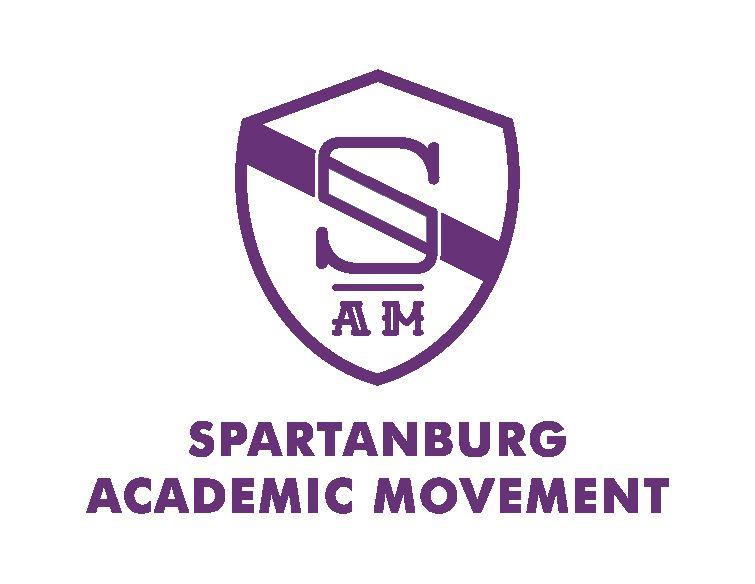
● Build a promise award by funding students after all available financial aid from federal, state, or college sources have been applied. Consider covering expenses such as textbooks, transportation, food, and housing for those from disadvantaged backgrounds.
● Use data and community goals to define the target audience of the program and address these key questions:
● What population will be served (e.g., are there age limits, residency/citizenship requirements, required enrollment intensity of those supported, inclusion of private colleges)?
● Should the promise program have an academic merit requirement? If so, what is the appropriate threshold for qualification and continuation with the program?
● What costs will the promise program cover, and will the benefits vary for students of different income levels?
● What is the total cost of a Spartanburg Promise Program?
Tailoring Spartanburg’s promise program to very explicit goals is the most important step in addressing the cost. Promise program costs will be driven by choices that leaders make about who will be served, what supports are included, and what level of tuition and cost the promise program will cover. For most promise programs, the “promise” is usually up to the price of tuition at public institutions, even if private institutions are an option for attendance. Average tuition at the two public colleges in the county ranges from $4K to $11K per year, so the structure of the program has a major impact on the annual costs. To ensure that financial aid from all sources is used before the promise program kicks in, it will be important to provide FAFSA and financial aid counseling support to prospective students.
Providing a promise scholarship could also shift enrollments to specific institutions, so understanding the impact of a blanket promise at any income level must be considered. If Spartanburg were to support 50% of an estimated 3,200 high school graduates in a single year, and those students selected one of the two public colleges in the county at the same ratio as recent high school graduating classes, just one year of tuition-only costs (excluding any other aid or without covering any other costs) would be nearly $9 million. Another consideration is that nearly two-thirds of students receive financial aid from multiple sources; leaders will need to determine how the promise program interacts with existing sources of financial aid.

Spartanburg’s investments in K-12 education have resulted in a tight-knit K-12 education sector that regularly uses data to track its outcomes and that invests in joint efforts to improve the college-going rate in Spartanburg County.
Despite these efforts, Spartanburg’s postsecondary education enrollment rate within one-year after high school has continued to decrease, from the 2013 high of 71% to 63% in 2020, the most recent year for which we have data. The enrollment gap between economically disadvantaged and economically advantaged students has also increased during this time period, mirroring national trends. Recognizing these trends, the Task Force recommends substantial investment in aligning K-12 and postsecondary education institutions, with investment areas falling within five areas:

Dual Enrollment/Early College Access Programs to improve efforts that allow students to earn college credits while in high school. SAM’s analysis of the SC College Ready Dual Enrollment Indicator shows that 90% of students in Spartanburg County who take 6 credits of dual enrollment during high school go on to enroll in college, compared to a 50% college enrollment rate for those who did not participate in 6 credits of dual enrollment. These programs include courses that high school students take at their schools to earn college credits, programs such as the Spartanburg County Early College High School, Scholars Academy, and Viking Early College. These programs also include Advanced Placement and International Baccalaureate opportunities, as well as programs where high school students may enroll in classes at college campuses. These programs may be tuition-free for students and allow high school students to start college with earned credits.
Network of Paid and Unpaid Connectors/Mentors/Counselors to connect current and potential students (and their families) to available resources that support college access and success. Spartanburg County is not new to mentoring programs for students seeking to enter college: the Start Smart program launched in 2020 and connected 23 high school graduates to 16 community coaches. Coaches sent more than 400 texts over the course of the program, and 19 of the students enrolled in postsecondary education. Scaling programs like this, with a combination of professional full-time mentors and community volunteers, would provide both the personal and professional networks students need to successfully navigate postsecondary education pathways.

Asynchronous Tools and Resources to Support Students and Families to ensure “just in time” information is available when live supports are not. Web-based resources can fill a vital role for students and their families seeking information about postsecondary education opportunities and resources. Sites such as the South Carolina Transfer and Articulation Center (“SC TRAC”) offer students information on how to combine credits taken at multiple institutions, while the South Carolina Commission on Higher Education maintains many resources for families related to financial aid/scholarships and grants, tips for preparing for college, and links to all of South Carolina’s institutions of higher education. Spartanburg County does not need to recreate the wheel; mentors and counselors should be regularly briefed on available resources to share with students and their families, and a public awareness campaign can leverage these resources.
Consistent and Equitable High-Quality College and Career Readiness Supports for All Spartanburg County school districts to ensure all students in Spartanburg County are provided access to all available resources, including FAFSA events, counseling, and programs to reduce summer melt, and receive counseling to support college and career readiness decisions that will ensure individual student success. Spartanburg County has 7 school districts spread across the county. The issue of equity has been front and center for many in Spartanburg and has led to specific investments in the Highland and Northside neighborhoods, which have traditionally had significantly higher rates of poverty, lower rates of education, and the related social challenges that often come alongside, including poorer quality of health and lower civic engagement. One challenge in regions with several options is that as families move from district to district, opportunities for students may shift based on what programs those districts have available. Providing county-wide high-quality college and career readiness supports will ensure equitable access to vital information and will allow the county to better leverage local, regional, and state resources available to support students as they move into and through postsecondary education.



Develop a Clear Data Picture for the Entire Education Pathway to ensure adequate tracking of detailed information that tells the story of postsecondary education attainment and workforce entrance in Spartanburg County. SAM has been transparent that its early focus has been on K-12 education; as it moves into the postsecondary space, building capacity around its postsecondary data analysis and reporting will be vital to ensuring adequate progress is made in achieving the county’s college attainment goals. All undergraduate-serving institutions in Spartanburg County should sign up for the National Student Clearinghouse’s (NSC) Postsecondary Data Partnership (PDP) tool and use their data to analyze their student progress, as well as regularly track, analyze, and report persistence data for specific student populations, including for returning adults, for students by race/ethnicity, and for Pell recipients.

South Carolina’s School Report Cards offer a variety of indicators, including guidelines for both college readiness and career readiness benchmarks. These guidelines are intended to determine if students graduating from a given high school are prepared for college or careers after graduating.

Though the percentages vary some, fewer than 35% of students in all school districts in Spartanburg County meet the threshold for college AND career ready. Students in Spartanburg are consistently more likely to achieve the benchmark for career ready than college ready.
Meets at least one of the following:
● Composite score of 20+ on the ACT
● Composite score of 1020+ on the SAT
● Scores 3 or higher on an Advanced Placement exam
● Scores 4 or higher on an International Baccalaureate assessment
● Completes at least six credit hours in dual enrollment courses with a grade of C or higher
Meets at least one of the following:
● Is a CTE completer and earns a national or state industry credential as determined by the business community
● Earns a Silver, Gold, or Platinum National Career Readiness Certificate on the state-approved career readiness assessment
● Earns a scale score of 31 or higher on the ASVAB

● Successfully completes a state-approved work-based learning program
● Is identified as a student with a disability who successfully completes the South Carolina High School Employability Credential according to their Individualized Education Plan (IEP)

● Ensure that students have equitable access to AP classes across Spartanburg County high schools.
● Launch a county-wide program that ensures all high school students can take classes tuition-free at colleges and universities located within Spartanburg County.
● Facilitate a comprehensive and coordinated two-year mentoring program that matches all disadvantaged students with a mentor beginning their junior year of high school.
● Create an interactive web-tool that demonstrates the effects of various postsecondary interventions on attainment outcomes, with regular updates of real-time data, including evaluation metrics from those interventions.
● Expand Advancement Via Individual Determination (AVID) program across all Spartanburg County school districts.
● Continue to advocate for funding support of AP, IB, and dual enrollment.
● Launch a volunteer mentor program that connects the most interested students with community volunteers.
● Collect and share available web tools with families; create a community “scavenger hunt” to encourage people to use resources.

● Publish annual reports on the “state of college attainment in Spartanburg.”
● Ensure all undergraduate-serving institutions in Spartanburg County sign up for National Student Clearinghouse’s Postsecondary Data Partnership (PDP) tool.

Spartanburg County is currently home to over 45,000 working age adults (age 18-65) with some college and no degree, while nearly 60,000 working age adults have only a high school diploma or its equivalent.¹⁴

Investing in activities to assist adults either start or complete a postsecondary credential later in life could have a substantial impact on the education attainment level of Spartanburg. Spartanburg can support returning adult students by offering solutions such as financial aid for adults as well as building adult-centric postsecondary programs that have convenient time frames, childcare, virtual options, or transportation to help adults manage work and family obligations.
Adult students also require specific advising about the process of returning to college, along with guidance in academic choices that are most efficient among a number of pathways.

Specifically, core areas of focus include:
Adults/Comebackers/Graduate Network Model, to focus on bringing adults with some college or no college through the postsecondary education pipeline. This approach would likely engage a centralized “case management” model for some or all adults interested in completing a postsecondary credential or degree, with a particular focus on equitable outcomes and focusing on underserved adults. This model could be overseen by a higher education consortium, a third-party backbone organization such as SAM, or an as-yet unidentified community partner. A coordinated employer-based effort would be pivotal under this strategy as well, ensuring that Spartanburg’s employer community is known regionally and nationally for its efforts to support employees as they complete their degrees.



Student-Centered Articulation Agreements between South Carolina colleges and universities to ensure that students with some college but no degree are not penalized for stopping out or transferring institutions. Ninety percent of colleges and universities withhold transcripts and other services for students who have fallen behind on small payments, which can include overdue loan payments or payments as small as a library fine or a parking ticket. The Consumer Financial Protection Bureau has found such practices “abusive” and recommended that colleges end the practice (Goodman, 2022).¹⁵ Transcript holds can prevent students from transferring to other institutions or applying to jobs that require transcripts. A student-centered approach to articulation would place students, their needs, and their career interests at the center of any policy-making, ensuring that outdated policies don’t hurt students’ education and career progression. Examples include forgiveness of small student debts that prevent re-enrollment and removing or increasing “time to expiration” requirements on credits.
Student Success Coaching, based at institutions of higher education, to support student persistence and completion. These institutionally based efforts would ensure that professionals at colleges had distinct coaching portfolios and engaged with their students regularly and intentionally. Alerts and supports should be equity focused and have an emphasis on persistence and completion. Coaches should have the latitude to wield emergency funds and other necessary resources to support the goal of retaining students.
Prior Learning Assessment (PLA), Credit Aggregation, and Reverse Transfer to help adult students with significant college credit and/or work experience but no degree earn a college credential. Efforts across the country to support “comebackers”–adults returning to college after a significant break from course taking–have revealed a number of strategies to support working adults. Prior learning assessment allows college credit to be awarded for work experience, and credit aggregation helps students with multiple transcripts move all their credits into one degree plan. Reverse transfer is a process through which expert postsecondary education advisors analyze existing course work taken in pursuit of a bachelor’s degree to determine if a certificate or associate’s degree could be awarded based on that course work.
Adult-Facing Services and Supports, offering resources that target adults and the extra constraints they may face when returning to, and persisting in, postsecondary education. Investments in this area may include childcare programs for parents (based either at places of employment or the colleges themselves), specialized counseling and mentoring focused on adult needs, and flexible course offerings that allow adults to balance their busy schedules with college. Such flexibility may include asynchronous courses and online offerings.
● Implement Vision Plan 2.0’s “Unfinished Business” recommendations, which include developing staff and programmatic capacity to advance the effort and implementing a Graduate Network service model to provide a high-quality contact advising program. This model, led by Navigators, offers institution-agnostic support to interested adults with needs related to transcripts, degree program choices, college applications, and financial liens or challenges.
● Offer tuition-plus-other-costs financial support model that includes returning adult students.
● Create opportunities for adult students who want to complete degrees or retool and advance in their workplace, offering flexible course schedules.
● Convene all Spartanburg colleges to build a joint comprehensive and integrated online advising system for Spartanburg County focused on retention and persistence that allows adults to track their progress, select course requirements for that semester (e.g., maximum flexibility or minimum cost), and identify how their courses might articulate to other institutions.

● Centralize an adult-specific web tool to support adults who want to return to college.
● Offer guidance through OneSpartanburg, Inc. to local employers about establishing tuition remission programs for employees.


Economic opportunity and equitable outcomes are increasingly being driven by the ability to obtain high-value credentials and degrees that pay a living wage.
As illustrated in Figure 1, higher wages are directly tied to higher levels of income: those with a bachelor’s degree earn, on average, $1.2 million dollars more over the course of their lifetimes than those with only a high school diploma. Additionally, select in-demand, high-value credentials can offer similar wage benefits to those individuals carefully aligned with the job market. Forward-looking communities are increasingly analyzing their region’s employer job demands to more tightly assess the skills needed to fill open positions (as well as future openings) and the skills required as the economy continues to grow. All people in Spartanburg need to be aware of these in-demand skill and degree needs, as well as the lifetime earnings that can accrue to individuals tightly aligned with the labor market.
At the time of this publication, OneSpartanburg, Inc. has launched such an analysis, which is a necessary and vital step to strengthen the signaling that needs to happen from employers to educators. Such an analysis will allow individuals and institutions to better understand which jobs are in high-demand and shape educational pathways to them. This analysis is expected in early Winter 2023 and should serve as the foundation for any of the activities outlined below:
Create Feedback Loops Between Educators and Employers to Guide Workforce Alignment, analyzing high-demand jobs and gaps in skills and degree production, and engaging employers proactively to guide necessary education changes. The analysis of workforce demand led by OneSpartanburg, Inc. is a foundational element to this work. Industry advisory groups at colleges and universities should be tasked with using this analysis to guide curricular decisions, including the creation of new certificates, majors, and degrees as well as updating course learning outcomes and structures.



Build Earn and Learn Opportunities to reduce friction that may exist for students as they enter the workforce and to provide professional experiences for students so they can exit educational structures with workplace skills. Earn and learn programs are traditionally focused on work-based learning and offer opportunities for people to intern and apprentice with employers while also earning college credit. The paid element is key to these programs, with all participants earning a wage while engaged in workplace experiences. Earn and Learn programs allow young people and adults to engage with employers and learn professional skills while also maintaining their college academics. Such programs ease the transition from one space to another and allow employers to get to know future employees. Recent research from the Urban Institute demonstrated substantial returns that the majority of employers experience from apprenticeship programs,¹⁶ and other employers are experimenting with paid micro-internships. ¹⁷ Both of these solutions increase the opportunities available for students to receive workplace experience before they enter the workforce.
Career-Focused Counseling with trained professionals familiar with local/regional workforce needs to meet students where they are (worksites, community centers, elementary schools with their children, libraries, churches, online, etc.). Equity-focused efforts to strengthen education and workforce outcomes require imagining new ways to offer career-focused counseling through existing community resources. Employers can host career counseling onsite for their employees; and local non-profits, whom adults and young people may be engaging with for other purposes, are rich environments to offer career-focused counseling.

● Create a single online/mobile friendly entry point for all Spartanburg County residents to access career guidance, internship and apprenticeship opportunities, and information on high-demand careers and education pathways.

● Offer a robust incentive structure to encourage employers to offer a significant number of internships and other work-based learning.
● Provide supports to regularly convene industry advisory groups at local institutions with each other to identify high-impact jobs and pathways.
● Convene colleges and universities to draft a “best practices in work-based learning” publication to distribute to employers, encouraging them to offer work-based learning opportunities.


In our rapidly changing society, we must be able to address emerging challenges that impact persistence and college completion, working collaboratively across institutions and sectors to address them.

In the course of our exploration, the Task Force identified three emerging community needs that are comprehensive and require coordinated and sustained efforts to mitigate:
Mental health supports to engage students struggling with daily stressors, the effects of the pandemic, racial trauma, and other barriers to postsecondary completion. Increased mental health challenges are well-documented across the country for both children and adults. Colleges and universities are grappling with a student population that expects to receive mental health supports as part of their postsecondary education as well as a workforce also grappling with increased need for mental health services. The Task Force imagines increased support through telemedicine and coordinated services across the community that link health care, employers, educators, and community organizations servicing Spartanburg residents. Additionally, the Task Force imagines multi-generational supports to engage parents and their children, adult caregivers and the elderly they are responsible for, and employers and employees seeking to build family-friendly environments. Connection to diverse counselors, social workers, and psychotherapists is vital to serving a diverse community and may require investments to build a sufficient healthcare base.
Grow capacity at colleges and universities in high-demand careers, identifying inhibitors to growth at local institutions and efficiencies. One of the biggest realities facing the education pipeline in Spartanburg is that the seven institutions of higher education in the county graduate about 1800 undergraduate students a year, a number insufficient to meet the full employer demand in such a vibrant regional economy. While Spartanburg employers can source talent from elsewhere, and many individuals receive postsecondary degrees and credentials from institutions outside Spartanburg, Spartanburg colleges and universities should also partner to grow their capacity together. Some potential areas to partner include offering joint degrees, where students might combine courses from different institutions to earn their credentials or degrees, or sharing faculty and other experts to develop curricula and applied research. As the results from the jobs demand research from OneSpartanburg, Inc. emerges, such a partnership or consortium model may represent the quickest way to build new programs that serve the economic needs of the region.


Continuously refine a policy agenda that is reflective of postsecondary education priorities. Educate county and state elected officials about education outcomes and gaps to advocate for solutions that will reduce equity gaps, and ensure that all Spartanburg residents are aware of the reasons to earn a college credential and the pathways available to them. To address issues of access and affordability at the systems level, SAM recognizes that policy change must accompany programmatic and philanthropic efforts to remove barriers to postsecondary opportunities.

● Expand United Way of the Piedmont’s Community Resource Coordinator model to additional higher education institutions to assist students in connecting with resources beyond their campus.
● Build and continuously refine a postsecondary education policy agenda that reflects the priorities articulated by the Task Force.
● Develop a comprehensive plan to grow the mental health workforce in Spartanburg County, including college scholarship incentives for those entering mental health professions and incentives for those who work at higher education institutions.
● Offer widespread training for all professionals working in higher education in Spartanburg around recognizing mental health challenges and available resources for those in need.
● Building on the College Town model, convene a staffed consortia of higher education institutions focused on growing capacity for high-demand jobs and streamlining how students access those education and training pathways.
● Encourage Spartanburg colleges and universities to increase enrollment in mental health tracks.

● Ask healthcare providers to attend community events to strengthen outreach.
● Support OneSpartanburg, Inc. to host briefings of its workforce analysis for colleges and universities.

In 2008, our community set forth a vision that “Spartanburg County will become the best educated county in the State with a national reputation for its commitment to education at all levels culminating in the achievement of high levels of degree attainment; and it will be recognized nationally for its ability to develop local talent and to generate and attract investments because of that talent.” Spartanburg County has attracted the attention of the nation due to its education and economic growth efforts and as this bold vision comes to fruition, Spartanburg is poised to accelerate this work as we look to the year 2030.
This plan builds on our county’s previous work and represents the collaboration and investment of hundreds of community members within Spartanburg, especially those leading its education sector. As SAM guides Spartanburg County through this plan, current and future investments, and its implementation, the community is ready to undertake the collective action necessary to see meaningful and equitable postsecondary educational attainment growth.

This Task Force represents a well-aligned group of education leaders that is collaborating more closely than ever before. Together, working with local, regional, and national partners, we will seek to secure additional investment to advance this work in a meaningful way. Our path forward will require institutional and communal commitment to this postsecondary agenda, the development and ownership of shared outcomes and targets, ongoing communication and feedback, and anchored support by SAM and OneSpartanburg, Inc. Our collective success depends on working in deep partnership, equitably centering the needs of students and individuals.
Education has remained among the highest priority for Spartanburg County. The recent pandemic coupled with the economic stressors many of our families are currently experiencing have further underscored the importance of a well-educated community. Despite these unprecedented challenges, historic economic and philanthropic investments are still occurring, and there is unlimited human potential within the community. Our work ensures that every Spartanburg resident can be an active participant in the economy, fostering their upward economic mobility. Doing so will strengthen our community networks, lead to higher levels of educational attainment and employment, and bolster economic prosperity for all of Spartanburg.


Spartanburg County Adult Education
Spartanburg Districts 1-7
Russell Booker
Executive Director Spartanburg Academic Movement
Executive Director
Adult Learning Center, Inc.
Matthew Cannon
Dean-Carolina’s Campus VCOM-Carolinas
COO/CFO Sherman College
Will Case Associate Provost Converse University
Scott Cochran President
Spartanburg Methodist College
Director
RD Anderson Applied Technology Center (co-chair, Community Engagement Working Group)
Dean of Student Retention
Spartanburg Community College
Superintendent
Spartanburg School District 5
Bennie Harris Chancellor USC Upstate
Converse University (co-chair, Community Engagement Working Group)
Vice Provost for Professional and Public Relations, VCOM-Carolinas
VP for Enrollment
Spartanburg Methodist College Michael Mikota President Spartanburg Community College
Darryl Owings
Superintendent Spartanburg School District 6
Nayef Samhat
President Wofford College
Tim Schmitz Provost Wofford College
President
OneSpartanburg, Inc.
Director of College and Career Readiness
Spartanburg Academic Movement
Superintendent Spartanburg School District 7
Vice Chancellor USC Upstate
Associate VP Sherman College
Data Manager
Spartanburg Academic Movement

Chief Talent Officer OneSpartanburg, Inc.
Dean of Education Human Performance, and Health USC Upstate
When the community of Spartanburg ramped up its education pipeline focus beginning in 2008, it intentionally began with early childhood education, with the expectation that a strong foundation was a necessary requirement for any community focused on education attainment.

Over the years, these efforts have paid off, and Spartanburg County’s early education programs are seeing some impressive outcomes. However, the data also indicate that without additional intervention, the postsecondary education attainment rates are stagnating. This report’s plan is intended to outline the additional interventions necessary to jumpstart postsecondary education attainment rates. The following data points that should be collected to ensure the community can adequately track progress.
As a community, Spartanburg still needs to gather the data needed to define the postsecondary goals it wants to achieve. This work should be informed by the OneSpartanburg, Inc.’s analysis on workforce demand and will need to assess the degree completion capacity within each of the region’s postsecondary education institutions. Institutions will need to collaboratively imagine what new degree offerings and flexible degree offerings might look like to meet demand, and which community benchmarks should be tracked and reported regularly. Below are preliminary recommendations for elements that would be present within a data framework. For a strong example of how one community built their postsecondary education and workforce data framework, see Greater Louisville Project’s analysis of degree attainment in their region.
HS to College Immediate Transition in Spartanburg County National Student Clearinghouse
HS to College Immediate Transition Anywhere in Country National Student Clearinghouse
Dual Enrollment by Demographics
AP Enrollment by Demographics
State Data/NCES Common Core of Data
State Data/NCES Common Core of Data
Persistence Rates for Spartanburg Colleges (by race/Pell grant and enrollment type) National Student Clearinghouse, PDP tool
Graduation Rates for Spartanburg Colleges (by race/Pell grant and enrollment type) National Student Clearinghouse
Credit Accumulation Rates (CAR) & Credit Completion Ratio (CCR) National Student Clearinghouse
College Attainment/Workforce Entry Data
Degree Production for Spartanburg Colleges
City/County/Statewide Attainment Trends, by education level
City/County/Statewide Attainment Trends, by race
The Integrated Postsecondary Education Data System (IPEDS)
Lumina (from Stronger Nation/Census ACS)
Lumina (from Stronger Nation/Census ACS)
¹ Retrieved 11/17/22 from https://research.collegeboard.org/media/pd f/education-pays-2019-full-report.pdf
² Retrieved 11/17/22 from https://www.postsecondaryvalue.org/wp-co ntent/uploads/2021/05/PVC-Final-Report-FI NAL.pdf
³ Retrieved 11/10/22 from https://www.census.gov/quickfacts/spartan burgcountysouthcarolina
⁴ Retrieved 11/10/22 from https://www.census.gov/quickfacts/spartan burgcountysouthcarolina
⁵ Retrieved 11/17/22 from https://www.learnwithsam.org/high-schoolcompletion

⁶ Retrieved 11/17/22 from https://public.tableau.com/app/profile/beth. thompson/viz/StudentTrackerOneYearEnrol lmentwithNewData9_21_22/Public
⁷ Retrieved 11/17/22 from https://public.tableau.com/app/profile/beth. thompson/viz/StudentTrackerPersistenceA pril2022Data/Persistence
⁸ Retrieved 11/17/22 from https://public.tableau.com/app/profile/beth. thompson/viz/StudentTrackerCompletionwi thApril2022Data/Completion
⁹
U.S. Department of Education, National Center for Education Statistics, Integrated Postsecondary Education Data System (IPEDS), 2020-21 Collection Year, Fall Enrollment (EF) 2020, Derived variable "DRVEF2020"\
¹⁰ Retrieved 11/17/22 from https://goodjobsdata.org/wp-content/uploads /Good-Jobs-wo-BA.pdf
¹¹ The current short-term credential attainment rate in South Carolina is 6.9% which includes 3.7% of certificates and 3.2% of certifications. Data about these credentials are not yet collected at the county level or disaggregated by race and ethnicity, so they are omitted from state totals in the charts that Lumina provides on the Stronger Nation website.
¹² Retrieved 11/17/22 from https://www.luminafoundation.org/stronger-n ation/report/#/progress/state/SC
¹³ Retrieved 11/17/22 from https://www.mypromisetool.org/?source=coll ege-promise-web
¹⁴ Derived from U.S. Census data retrieved 11/17/22 from https://www.census.gov/quickfacts/spartanbu rgcountysouthcarolina
¹⁵ Retrieved 11/17/22 from https://www.chronicle.com/article/blanket-tra nscript-withholding-policies-are-abusive-fede ral-agency-says?cid=gen_sign_in
¹⁶ Retrieved 11/17/22 from https://www.urban.org/research/publication/d o-employers-earn-positive-returns-investmen ts-apprenticeship?&utm_source=urban_news letters&utm_id=workforce&utm_campaign=a pprenticeship_week
¹⁷ Retrieved 11/17/22 from https://www.forbes.com/sites/jasonwingard/2 019/03/06/why-micro-internships-will-be-thenext-big-thing/?sh=52852bd4700c


Higher Ed Insight (HEI) is a certified Woman-Owned Small Business that offers services in strategic learning, external evaluation, custom research, and facilitated events. Our team of applied researchers and facilitators offers a range of expertise focused on improving education and workforce outcomes, especially for populations who have been historically marginalized from the promise of postsecondary education.

www.learnwithsam.org

